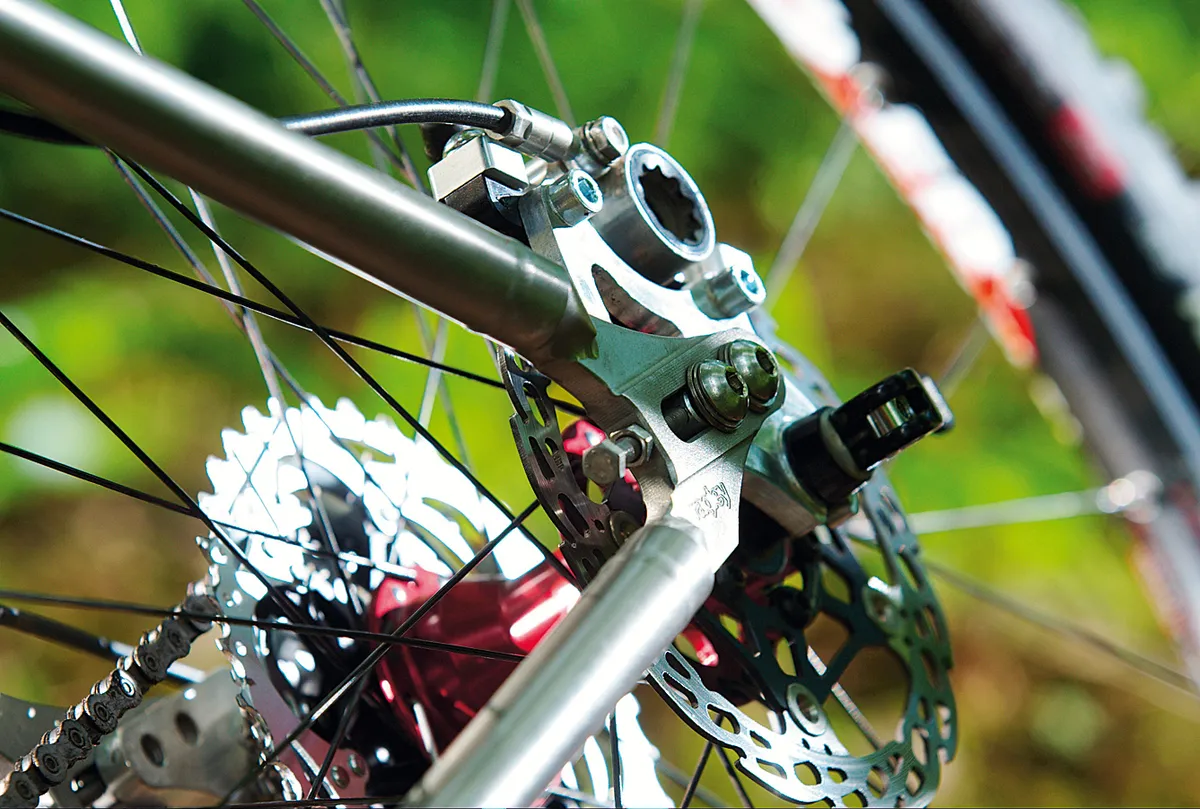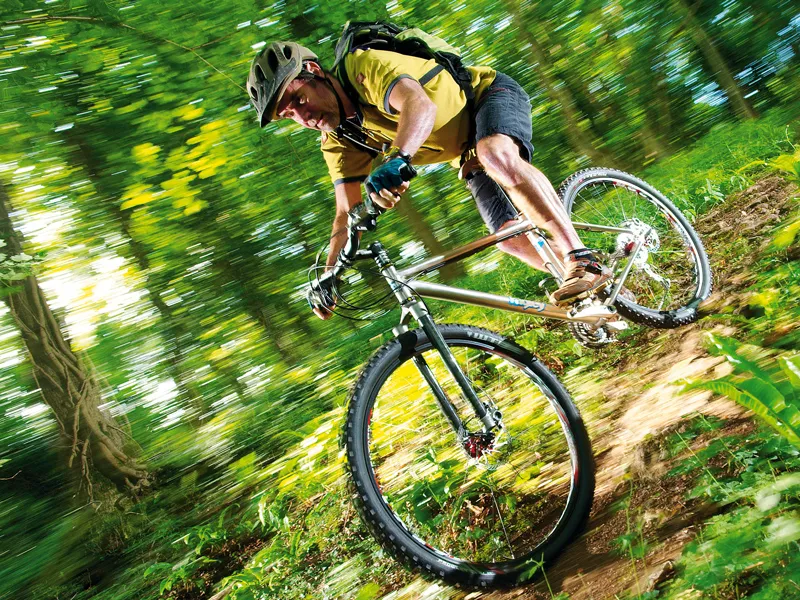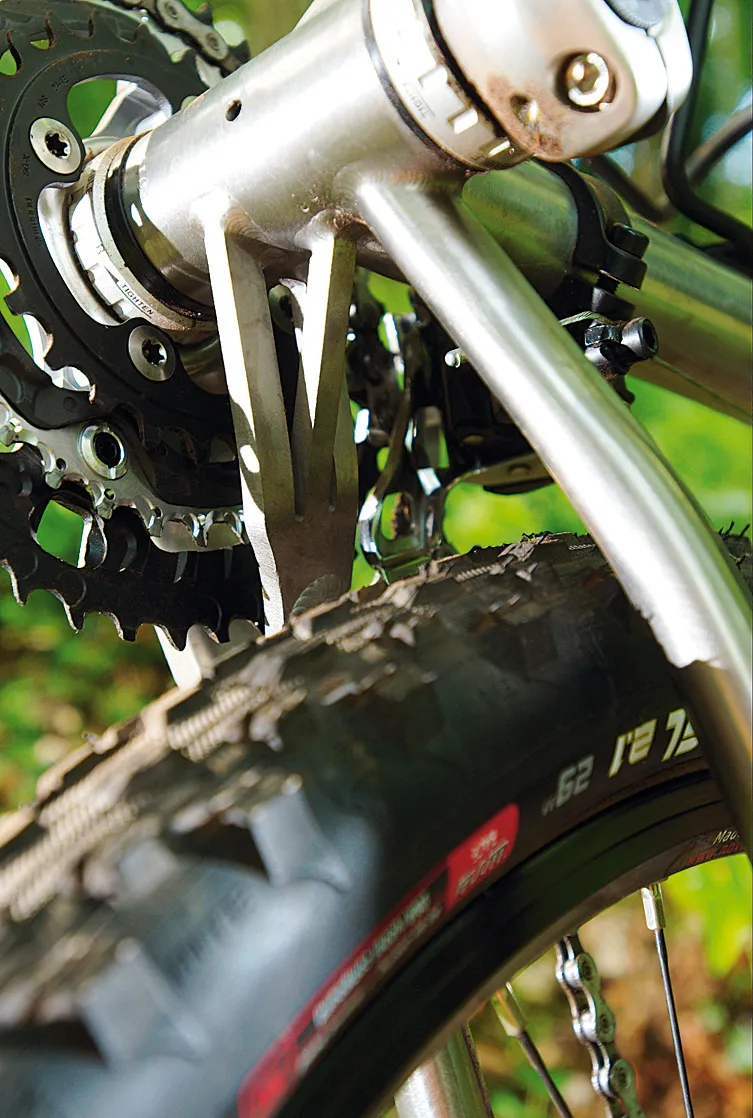Our first thoughts about the Ragley TD:1 were that £1,200 seems pretty good for a Lynskey US-built titanium frame. Our second thoughts were that it’s a brave move for anyone in these days of constantly increasing suspension travel to design a 29er frame specifically for riders who choose to ride rigid forks.
But Brant Richards, Ragley’s designer, has never been one to take cues from the mainstream. The big-wheeler revolution is gathering steam and Richards is aware that a lot of riders who choose big wheels also tend to favour fatter tyres rather than forks as their suspension medium.
Picking smooth lines to maintain speed is a challenge that will appeal to some riders, but won’t do it for everyone. Like riding a single gear, hitting difficult terrain on a fixed-blade fork is a skill that requires finesse and levels of determination that will seem utterly pointless to some riders.
Get it right, and you’ll soon be grinning from ear to ear. Get it wrong, and your ability to grin will quickly become challenged by grimace. The smooth roll of the big wheels/tyress helps to overcome the lack of plush elsewhere, though, and that’s why you’ll see a lot of 29er riders using rigid forks.
The purist approach inevitably results in a precise ride feel and less heft, both of which are a boost to acceleration and breezy climbing. All who rode the TD:1 seemed to start loving it towards the end of the first ride. Relax into the ride and what it’s capable of will surely amaze.
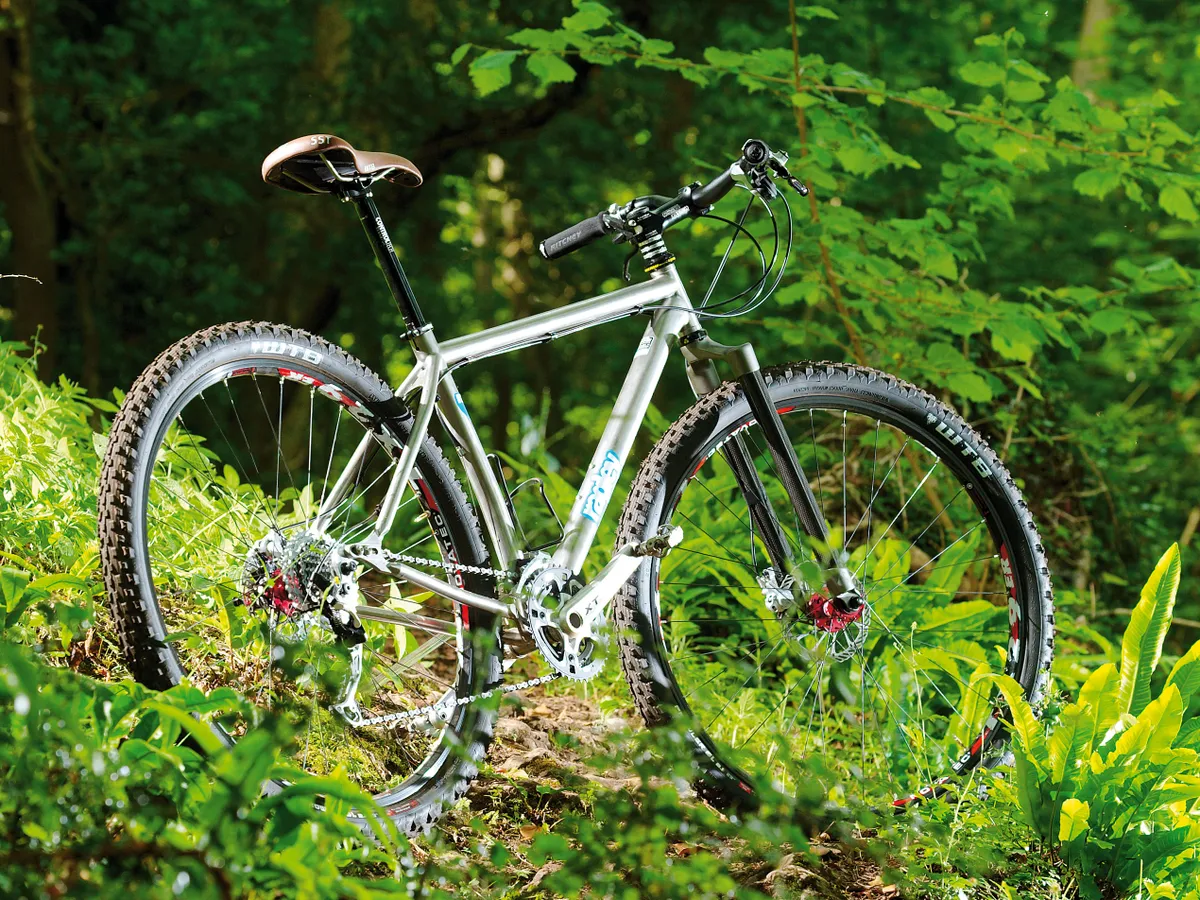
Ride & handling: Pin-sharp and lively trail feel, yet surprisingly smooth too
We’ve been experimenting with all sorts of different drivetrain setups on the Ragley, including 1x10, 2x10 and singlespeed. But for most of the initial test period, we’ve ridden with Shimano’s new Deore XT Dyna-Sys 3x10.
The full bike build tipped the scales at about 23.5lb (10.7kg), with TX29 wheels from Novatec, WTB’s Prowler SL 2.1in tyres, a Control Tech stem and seatpost, Ragley Carnegies bar and Hope Mono Mini brakes.
The big surprise – at least to riders not accustomed to running rigid forks and big wheels – is that the trail feel is not only pin-sharp and lively, but surprisingly smooth over all but the harshest terrain.
Big wheels and the high-profile tyres (converted to tubeless) run fairly soft help, as does the ability of premium quality titanium tubes and carbon fork legs to absorb tiny amounts of trail chatter.
The long wheelbase and top tube reach (24in), as well as the wide 25-degree sweep handlebar all play their own small part in creating a relaxed ride posture that feels completely at ease handling-wise on both high- and low-speed terrain.
With the 445mm fork fitted, the steering feels as sharp as on the best handling 26in-wheeled bikes, but the easy going rolling rhythm and bigger tread contact patches of the bigger wheels ensures that you carry speed noticeably better and tend to brake less than you might on a 26er.
We’ve often heard riders talking about 29ers not handling technical singletrack as well as 26ers. The TD:1 challenges that preconception. Sure, a fixed blade fork is a limiting factor when the going gets very rocky or rooty, particularly on high-speed descents where the rigid forks start flexing and fluttering under hard braking.
But on most trails, the light and lively front end makes both steering response and stability superb at all speeds, to a point where wheel size simply isn’t an issue apart from where it seems to help. That said, the smallest (16in) TD:1 still has a long reach, so riders under about 5ft 8in will have to look elsewhere.
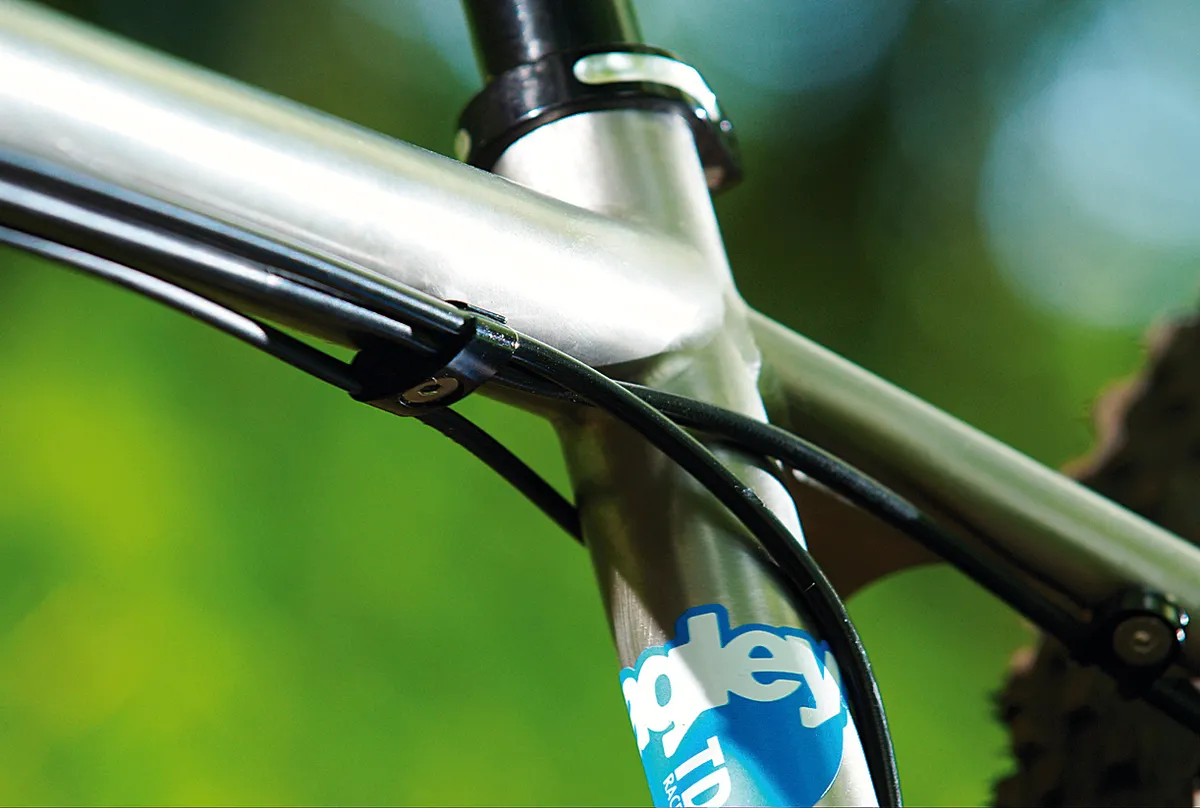
Frame: Unconventional chassis with some neat touches
The TD:1 is a logical evolution of Richards’ previous work with On-One. Its long sliding dropouts offer around an inch of chainstay and wheelbase adjustment, and allow you to run it as either a multiple- or single-geared bike. You need to watch those dropouts, though: two bolts kept coming loose until we applied threadlock to them.
The recommended fork length is 440mm, which is more usual as a fixed blade 26in wheel fork length. This avoids the typical lanky looking front end that some riders see as a downside of big-wheelers while at the same time keeping the handling as tight and lively as on most 26ers.
The Nuke Proof 445mm fork we fitted to our test bike made for a satisfyingly neutral 70-degree head angle, but Ragley will soon be launching a unique-looking carbon fixed-blade fork, in a choice of 440, 455 and 470mm lengths, for use with this or any other frame.
If you particularly like to be contrary, you could even fit big tyred 26in wheels and run a short travel suspension fork up front, although you’d have to be aware of the bottom bracket height on pedally bends.
Our frame is an 18in model, which comes with a generous 24in top tube reach. It’s made from Lynskey’s premium quality 3Al/2.5V Ti (3% aluminium, 2.5% vanadium). On its own, it tipped the scales at 1.8kg (just under 4lb), but the build is tough rather than super light.
Interesting features include the curved seat tube, which allows a shorter back end on than on many other 29ers; the threaded cable clamp bosses; the big biaxially ovalised down tube; masses of mud room around for even the biggest treads; and Ragley’s unique three finger Ti plate, which joins the right-hand chainstay into the bottom bracket. An assorted set of graphics comes with every bare frame.
